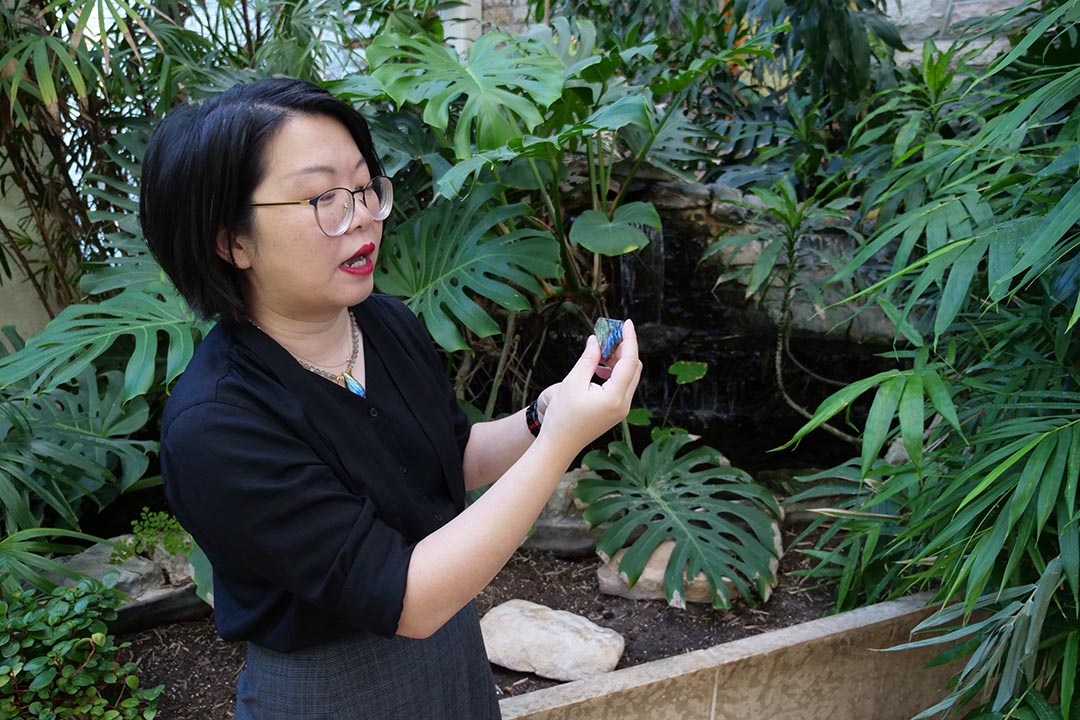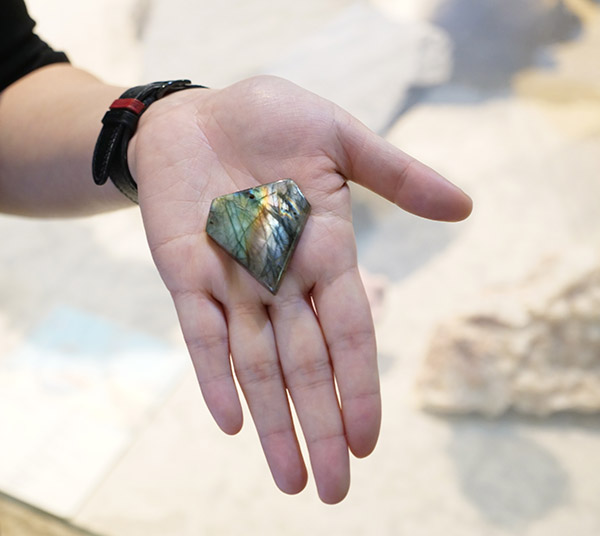
USask researcher uses laser and diamond technology to simulate meteorite impacts
Dr. Tianqi Xie (PhD) holds up a pendant on a necklace she wears around her neck – a piece of labradorite, a type of feldspar, shaped into a heart.
By Matt Olson, Research Profile and ImpactIt’s a reminder of the research that has defined the start of her professional career – exploring meteorite impact craters and the changes in the rocks resulting from the impact events.
Impact craters are commonly seen on rocky planetary bodies throughout our solar system, like the Earth, the moon, and Mars. Xie began her PhD study examining the rocks from Mistastin Lake impact structure in Labrador. She mainly focused on the changes in feldspar, one of the most common minerals not only in the Earth’s crust but also seen on the moon and Mars.
“Feldspar has a great memory,” she said. “You realize the rock in this impact crater has actually documented a number of historical changes related to that impact.”
Now an assistant professor in the University of Saskatchewan (USask) Department of Geological Sciences, Xie continues her research using ultra-advanced synchrotron X-ray and lasers to simulate the conditions of impact events and study how the impact brings changes to feldspar.
Through these experiments, Xie said we can better understand meteorite impact events and their effects throughout the solar system.
“With impact events ... it is very important but very hard to characterize how much pressure and heat they generated,” she said. “This study gives us that, and I hope the results will open up new research into how temperature plays a role in impacts.”
One of the changes in feldspar is the creation of diaplectic glass, which is observed in impact craters on Earth. When exposed to the right level of heat and pressure – from, for example, a meteorite impact – feldspar changes directly from a solid to a different kind of solid (diaplectic glass) without it melting.

Another form of feldspar, called maskelynite, is seen in Martian meteorites formed from the melting and cooling of feldspar. However, the exact conditions required to produce diaplectic glass or maskelynite remain a mystery.
In an effort to recreate the effects of a meteorite impact, Xie used synchrotron beamlines at the Argonne National Laboratory in Illinois. Using infrared laser to generate heat, a specialized tiny diamond “anvil” to generate pressure and a two-micron synchrotron X-ray to examine the samples, Xie was able to determine the exact amount of pressure and heat required to transform feldspar directly into diaplectic glass and maskelynite. Xie’s research paper from this work was recently published in Science Advances.
“In early stages studying impact events, experiments were conducted with gas guns ... but because that’s a fast process, it’s hard to capture what actually happens,” Xie said. “Our method is slower, and we can observe frame to frame how feldspar changes throughout the increases of pressure and temperature.”
Using her synchrotron method, Xie was able to get precise measurements under intense heat and pressure conditions for the formation of diaplectic glass and maskelynite – definitively outlining the different circumstances required for their creation and providing insights into the history of impact events in our solar system.
“How (feldspar) records the changes of planetary surfaces from impact events could give us a potential clue on what makes Earth different and similar to other planets,” Xie said. “We’ll be one step closer to figuring out why Earth has life and is the way it is.”

